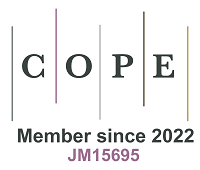REFERENCES
1. Albanese A, Bhatia K, Bressman SB, et al. Phenomenology and classification of dystonia: a consensus update. Mov Disord 2013;28:863-73.
2. Defazio G, Gigante AF, Hallett M, et al. Motor and psychiatric features in idiopathic blepharospasm: a data-driven cluster analysis. Parkinsonism Relat Disord 2022;104:94-8.
3. Fabbrini G, Berardelli I, Moretti G, et al. Psychiatric disorders in adult-onset focal dystonia: a case-control study. Mov Disord 2010;25:459-65.
4. Martino D, Defazio G, Alessio G, et al. Relationship between eye symptoms and blepharospasm: a multicenter case-control study. Mov Disord 2005;20:1564-70.
5. Tinazzi M, Erro R, Mascia MM, et al. Demographic and clinical determinants of neck pain in idiopathic cervical dystonia. J Neural Transm 2020;127:1435-9.
6. Romano R, Bertolino A, Gigante A, Martino D, Livrea P, Defazio G. Impaired cognitive functions in adult-onset primary cranial cervical dystonia. Parkinsonism Relat Disord 2014;20:162-5.
7. Stamelou M, Edwards MJ, Hallett M, Bhatia KP. The non-motor syndrome of primary dystonia: clinical and pathophysiological implications. Brain 2012;135:1668-81.
8. Defazio G, Aniello MS, Masi G, Lucchese V, De Candia D, Martino D. Frequency of familial aggregation in primary adult-onset cranial cervical dystonia. Neurol Sci 2003;24:168-9.
9. Martino D, Aniello MS, Masi G, et al. Validity of family history data on primary adult-onset dystonia. Arch Neurol 2004;61:1569-73.
10. Defazio G, Brancati F, Valente EM, et al. Familial blepharospasm is inherited as an autosomal dominant trait and relates to a novel unassigned gene. Mov Disord 2003;18:207-12.
11. Molloy A, Kimmich O, Williams L, et al. An evaluation of the role of environmental factors in the disease penetrance of cervical dystonia. J Neurol Neurosurg Psychiatry 2015;86:331-5.
12. Martino D, Defazio G, Abbruzzese G, et al. Are nongenetic triggers for dystonia type-specific? A study exploring scoliosis in blepharospasm. Mov Disord 2007;22:576-8.
13. Defazio G, Abbruzzese G, Aniello MS, et al. Environmental risk factors and clinical phenotype in familial and sporadic primary blepharospasm. Neurology 2011;77:631-7.
14. Defazio G, Abbruzzese G, Girlanda P, et al. Primary cervical dystonia and scoliosis: a multicenter case-control study. Neurology 2003;60:1012-5.
15. Roze E, Soumaré A, Pironneau I, et al. Case-control study of writer’s cramp. Brain 2009;132:756-64.
16. O'Riordan S, Raymond D, Lynch T, et al. Age at onset as a factor in determining the phenotype of primary torsion dystonia. Neurology 2004;63:1423-6.
17. Defazio G, Martino D, Aniello MS, et al. A family study on primary blepharospasm. J Neurol Neurosurg Psychiatry 2006;77:252-4.
18. Defazio G, Esposito M, Abbruzzese G, et al. The Italian Dystonia Registry: rationale, design and preliminary findings. Neurol Sci 2017;38:819-25.
19. Martino D, Macerollo A, Abbruzzese G, et al. Lower limb involvement in adult-onset primary dystonia: frequency and clinical features. Eur J Neurol 2010;17:242-6.
20. Defazio G, Ercoli T, Erro R, et al. Idiopathic non-task-specific upper limb dystonia, a neglected form of dystonia. Mov Disord 2020;35:2038-45.
21. Conte A, Ferrazzano G, Defazio G, Fabbrini G, Hallett M, Berardelli A. Increased blinking may be a precursor of blepharospasm: a longitudinal study. Mov Disord Clin Pract 2017;4:733-6.
22. Ferrazzano G, Conte A, Gigante A, Defazio G, Berardelli A, Fabbrini G. Disease progression in blepharospasm: a 5-year longitudinal study. Eur J Neurol 2019;26:268-73.
23. Meares R. Natural history of spasmodic torticollis, and effect of surgery. Lancet 1971;2:149-50.
24. Ferrazzano G, Berardelli I, Conte A, et al. Motor and non-motor symptoms in blepharospasm: clinical and pathophysiological implications. J Neurol 2019;266:2780-5.
25. Martino D, Berardelli A, Abbruzzese G, et al. Age at onset and symptom spread in primary adult-onset blepharospasm and cervical dystonia. Mov Disord 2012;27:1447-50.
26. Esposito M, Fabbrini G, Ferrazzano G, et al. Spread of dystonia in patients with idiopathic adult-onset laryngeal dystonia. Eur J Neurol 2018;25:1341-4.
27. Berman BD, Groth CL, Sillau SH, et al. Risk of spread in adult-onset isolated focal dystonia: a prospective international cohort study. J Neurol Neurosurg Psychiatry 2020;91:314-20.
28. Weiss EM, Hershey T, Karimi M, et al. Relative risk of spread of symptoms among the focal onset primary dystonias. Mov Disord 2006;21:1175-81.
29. Abbruzzese G, Berardelli A, Girlanda P, et al. Long-term assessment of the risk of spread in primary late-onset focal dystonia. J Neurol Neurosurg Psychiatry 2008;79:392-6.
30. Jinnah HA, Neychev V, Hess EJ. The anatomical basis for dystonia: the motor network model. Tremor Other Hyperkinet Mov 2017;7:506.
31. Mascia MM, Dagostino S, Defazio G. Does the network model fits neurophysiological abnormalities in blepharospasm? Neurol Sci 2020;41:2067-79.
33. Berardelli A, Rothwell JC, Day BL, Marsden CD. Pathophysiology of blepharospasm and oromandibular dystonia. Brain 1985;108:593-608.
34. Meunier S, Russmann H, Shamim E, Lamy JC, Hallett M. Plasticity of cortical inhibition in dystonia is impaired after motor learning and paired-associative stimulation. Eur J Neurosci 2012;35:975-86.
35. Conte A, Defazio G, Hallett M, Fabbrini G, Berardelli A. The role of sensory information in the pathophysiology of focal dystonias. Nat Rev Neurol 2019;15:224-33.
36. Scontrini A, Conte A, Defazio G, et al. Somatosensory temporal discrimination in patients with primary focal dystonia. J Neurol Neurosurg Psychiatry 2009;80:1315-9.
37. O’Dwyer JP, O’Riordan S, Saunders-Pullman R, et al. Sensory abnormalities in unaffected relatives in familial adult-onset dystonia. Neurology 2005;65:938-40.
38. Berardelli A, Abbruzzese G, Chen R, et al. Consensus paper on short-interval intracortical inhibition and other transcranial magnetic stimulation intracortical paradigms in movement disorders. Brain Stimul 2008;1:183-91.
39. Ziemann U, Paulus W, Nitsche MA, et al. Consensus: Motor cortex plasticity protocols. Brain Stimul 2008;1:164-82.
40. Mcginley M, Hoffman RL, Russ DW, Thomas JS, Clark BC. Older adults exhibit more intracortical inhibition and less intracortical facilitation than young adults. Exp Gerontol 2010;45:671-8.
41. Smith AE, Ridding MC, Higgins RD, Wittert GA, Pitcher JB. Age-related changes in short-latency motor cortex inhibition. Exp Brain Res 2009;198:489-500.
42. Kalisch T, Ragert P, Schwenkreis P, Dinse HR, Tegenthoff M. Impaired tactile acuity in old age is accompanied by enlarged hand representations in somatosensory cortex. Cerebral Cortex 2009;19:1530-8.
43. Hoshiyama M, Kakigi R, Tamura Y. Temporal discrimination threshold on various parts of the body. Muscle Nerve 2004;29:243-7.
44. Ramos VF, Esquenazi A, Villegas MA, Wu T, Hallett M. Temporal discrimination threshold with healthy aging. Neurobiol Aging 2016;43:174-9.
45. Schaumberg DA, Sullivan DA, Buring JE, Dana MR. Prevalence of dry eye syndrome among US women. Am J Ophthalmol 2003;136:318-26.
46. Moss SE, Klein R, Klein BE. Incidence of dry eye in an older population. Arch Ophthalmol 2004;122:369-73.







